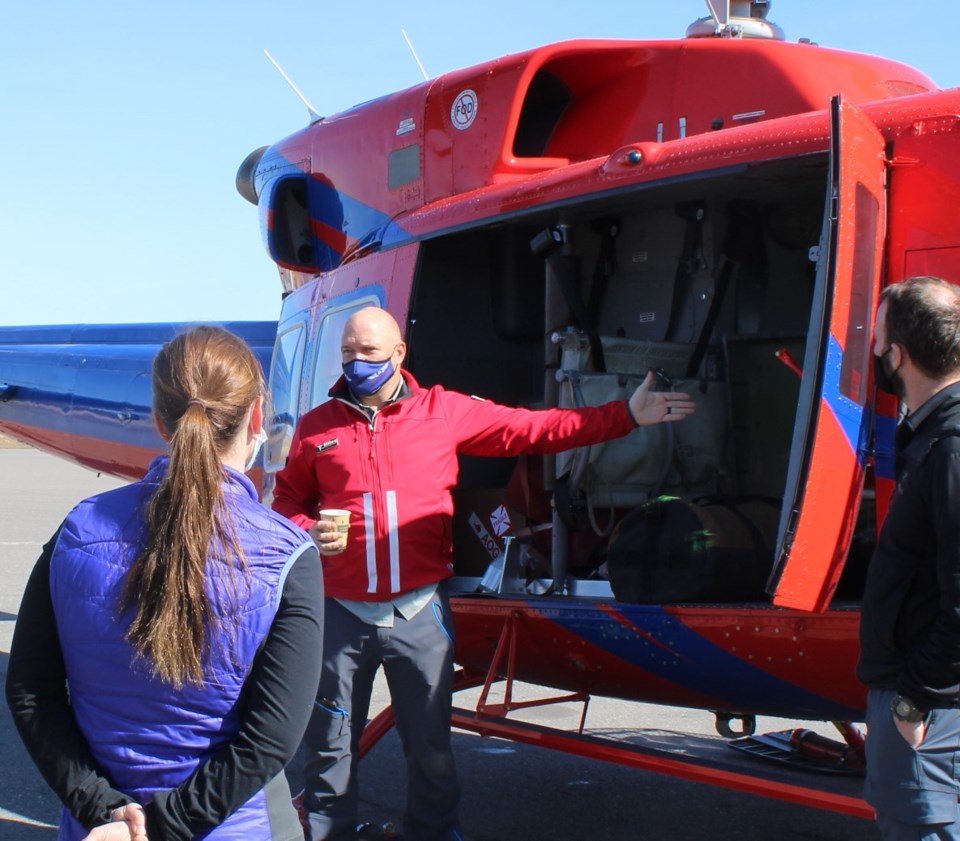Miles Randell has had no trouble finding enough talent in Prince George to help get a helicopter-based rescue service off the ground.
As of Thursday, 28 people with some impressive qualifications - from ambulance paramedics to full-fledged medical doctors - have gone through an orientation for Technical Evacuation Advanced Aero Medical (TEAAM) with 12 more waiting in the wings.
"They're lining up to work for us," he said during an interview at the Ron's Aviation Service Ltd. hangar at Prince George Airport where about a dozen were being put through their paces.
"It's new to Canada but people have seen it across the world."
Randell co-founded TEAAM in 2017 after losing a friend to a heart attack in the backcountry. Based in Squamish, the non-profit is now working to establish branches in Prince George, Fort St. John and Campbell River.
It is financed in part through a patronage program, similar to what's in place in Switzerland. By paying a combination of membership fee and insurance premium, you can call on them for a rescue should you find yourself in medical distress and out in the middle of nowhere.
It's proven to be a hit with tree-planting companies and logging contractors that have people working in remote locations, according to Randell. He hopes to get the Prince George version up and running by June but needs to raise about $350,000 to buy the equipment.
"It's a little bit of a slow start. COVID has slowed everything down, but now people are seeing that we're coming and there is a lot of community excitement about what this will do for people in remote settings and so I think that the community support is building," Randell said.
Among those taking in the orientation on Thursday were a husband and wife team.
Andrew Keilty outlined an extensive history in outdoor survival and rescue - from being a lifeguard and ski patroller to doing a month-long stint in the Arctic in February as a Canadian Forces reservist.
His wife is Dr. M.J. Slabbert Keilty, who works in the intensive care unit at University Hospital of Northern British Columbia and has worked on helicopter based medical teams in the United Kingdom, Australia and Ontario.
"We're very happy that TEAAM is coming," she said. "I think it fills a big gap in pre-hospital care, especially remote rescue care in northern B.C."
A rescue crew of two people, typically made up of a medical specialist and a rescue specialist, will take to the air and either land at the scene or send personnel down by long line. The helicopter covers as much as a two-hour flying radius. Crews work on call and need to be able to arrive at the base within about 15 minutes.
"When they get on scene, it's totally dependent. If it's a hiker with a broken leg and there might be only one other hiker or a logging accident, there could be multiple loggers there," base manager Jesse Flegel said and added extrication from logging trucks and other types of heavy equipment will be part of the training.



